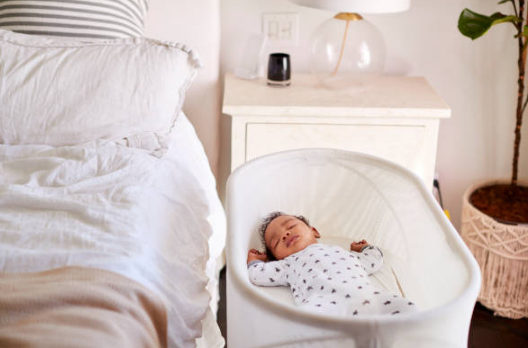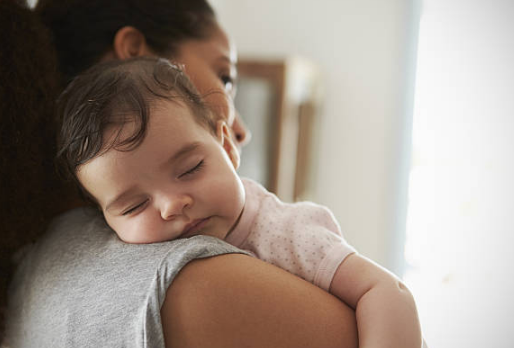Babies tend to like white noise. This may be because they are used to it. Before babies are born, they are immersed in the reassuring hum of human life day and night. The beating of the heart, the sound of blood rushing through the body, and the rhythm of each breath create a reassuring cacophony, somewhat similar to the roar of a vacuum cleaner.
In comparison, the sound of “boo” in the womb ranges from 72 to 88 decibels, while the sound of a vacuum cleaner is about 70 decibels. In other words, the womb is not a quiet place!
After birth, your baby will suddenly find himself in an unsettling world filled with muffled voices and neat footsteps. While this well-guarded silence is designed for their comfort, it can leave them feeling lonely, anxious, and isolated. It’s no wonder your baby may have trouble falling asleep. This is where white noise may come in handy.

Why White Noise Can Help Babies Fall Asleep
The white noise machine can create a comfortable, womb-like environment that calms babies and encourages them to stop crying and fall asleep faster. Studies have shown that they can also help children with certain tasks that may be affected by attention deficit hyperactivity disorder (ADHD), such as speech recognition.
White noise machines can also help babies sleep longer. It sounds like magic, but it’s actually a trick that is easy to explain.
Ever wondered why your baby seems to only sleep for 20 minutes at a time? When your little dreamer dozes off, they cycle back and forth between deep sleep and light sleep, going through brief “sleep-wake” periods about every 20 minutes or so. During these light sleeps, babies wake up easily and become anxious, causing nap time to end prematurely.
White noise can eliminate your baby’s built-in 20-minute alarm clock, and can override doorbells, loud sibling sounds, and other potential distractions during your baby’s fragile light sleep phase. If your baby begins to move naturally, the calming hum of the white noise machine can provide them with comfort and encourage them to return to deep sleep.

How to Buy a White Noise Machine
If you’re looking to buy a white noise machine to help your child sleep better, there are a few things to consider, including noise limits.
The American Academy of Pediatrics (AAP) has issued a warning for several white noise machines, stating that any noise above 50 decibels can damage a baby’s hearing and cause other developmental delays. Therefore, before purchasing a white noise machine, it is important to do your homework to ensure that your child is safe in terms of noise levels.
Another potential pitfall: battery-powered machines or machines that work only on timers. Many babies wake up when the machine stops working, so choose a model that can be left on all night if needed.
White noise machines are available online and in most stores. But if you’re on a budget, you can easily make white noise at home, such as turning on a fan. You can also buy a free white noise generator app for your smartphone, such as White Noise Baby – a great portable option.
How to Use the White Noise Machine
Now that you’ve chosen the right machine, you might be wondering how to best use it. What volume works best? How big is too big?
You may need to adjust the volume of the white noise machine so that it can effectively calm down a crying baby. Once your little one has been soothed, adjust the volume to the level of a gentle shower. If you feel that the volume is too loud, be sure to turn it down, as your little one may also feel uncomfortable.
In addition to avoiding turning the volume up to the maximum, research has shown that it is best to place white noise machines at least a foot away from children.
It’s also a good idea to consult your child’s health care practitioner before using a white noise machine or any white noise machine alternative.
